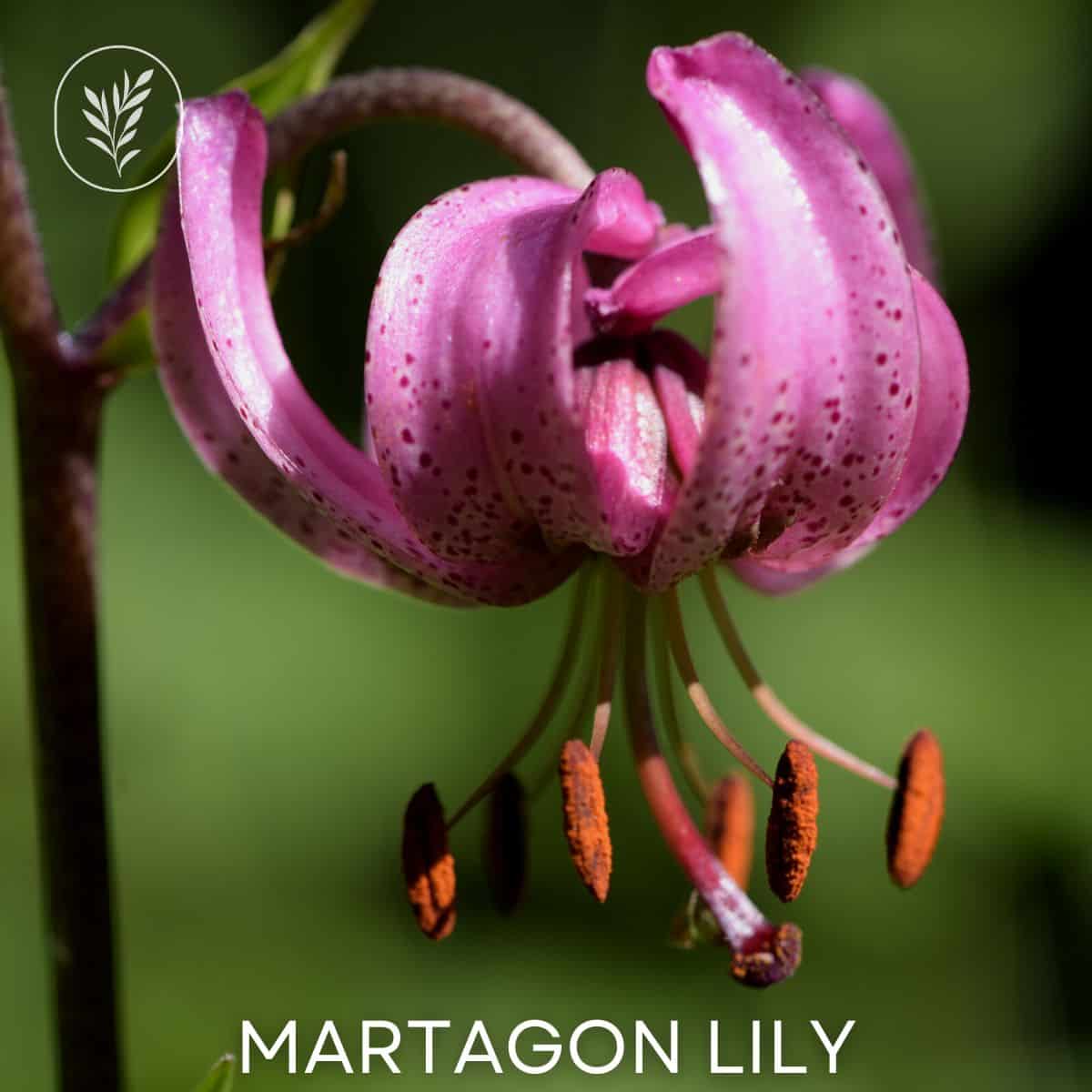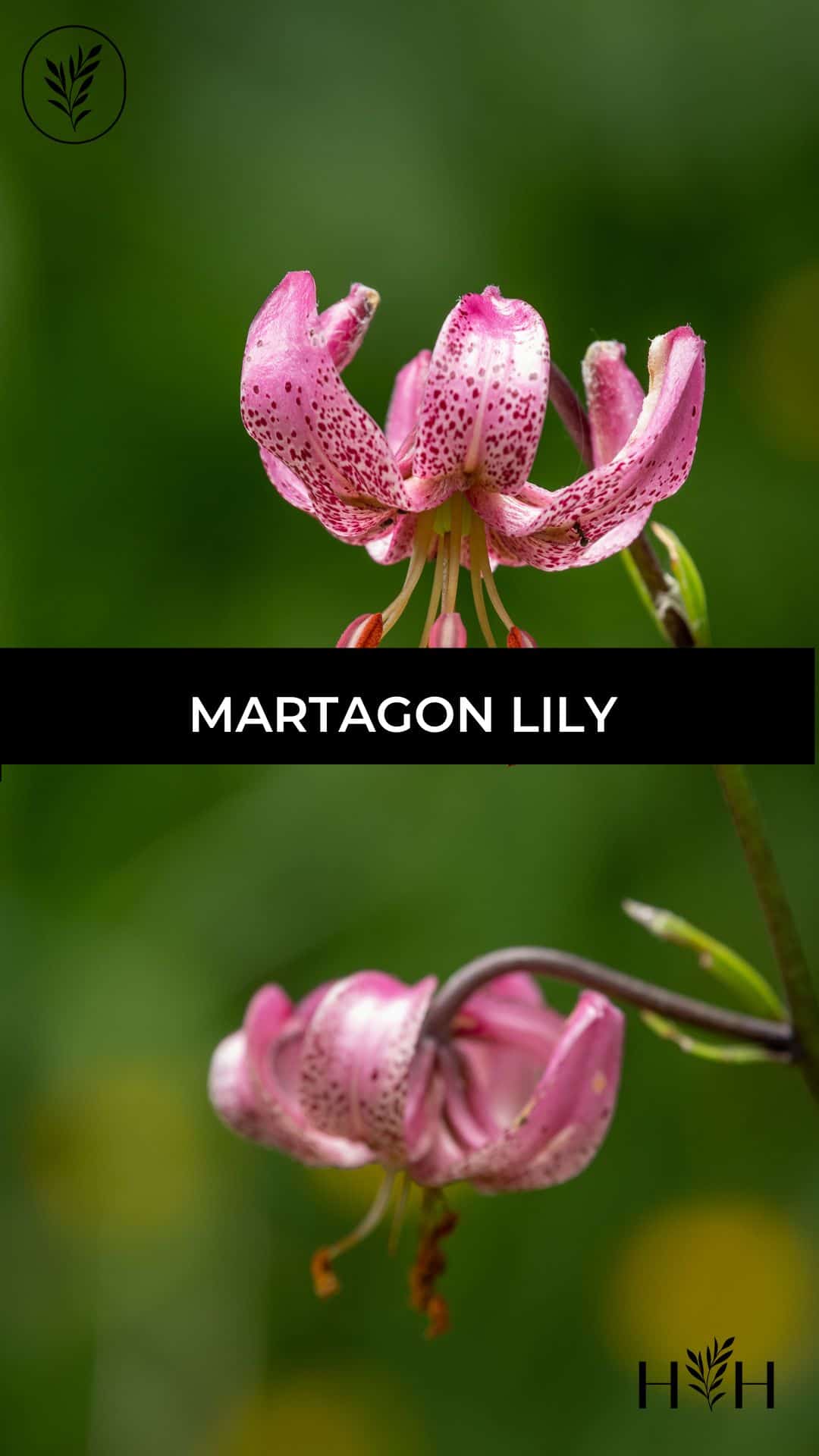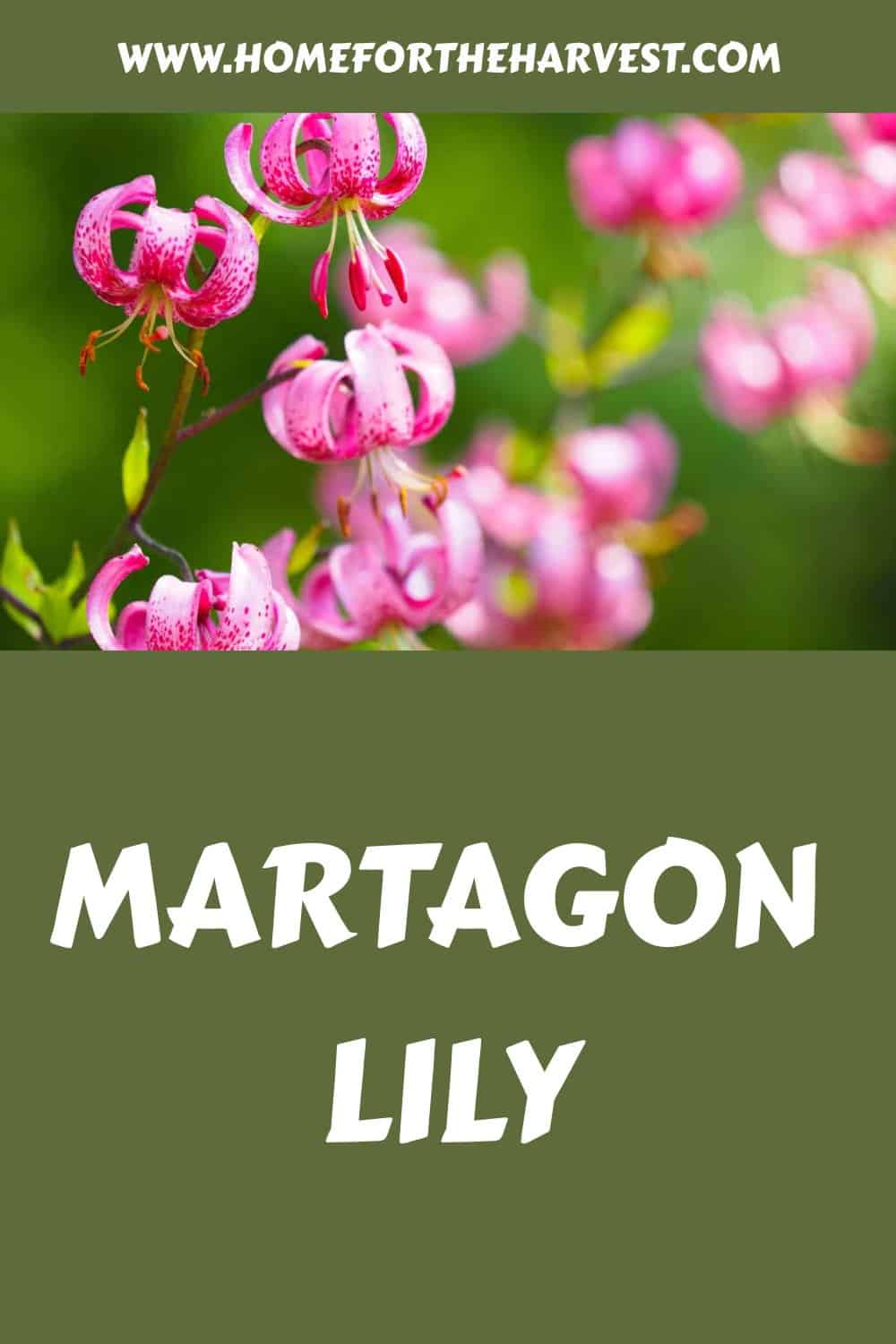Martagon lilies are a favorite in the garden. These gorgeous plants native to Europe are easy for beginner gardeners in North America, yet still offer stunning blooms that will brighten up any yard or patio!
The martagon lily (Lilium martagon), also called the Turk’s cap lily, is a species of true lily native to Europe and Asia. They are known for their delicate nodding, curled-back blossoms that generally come in shades of pink. Martagon lilies and their hybrids tend to grow well in cooler, shady areas than other types of lilies.
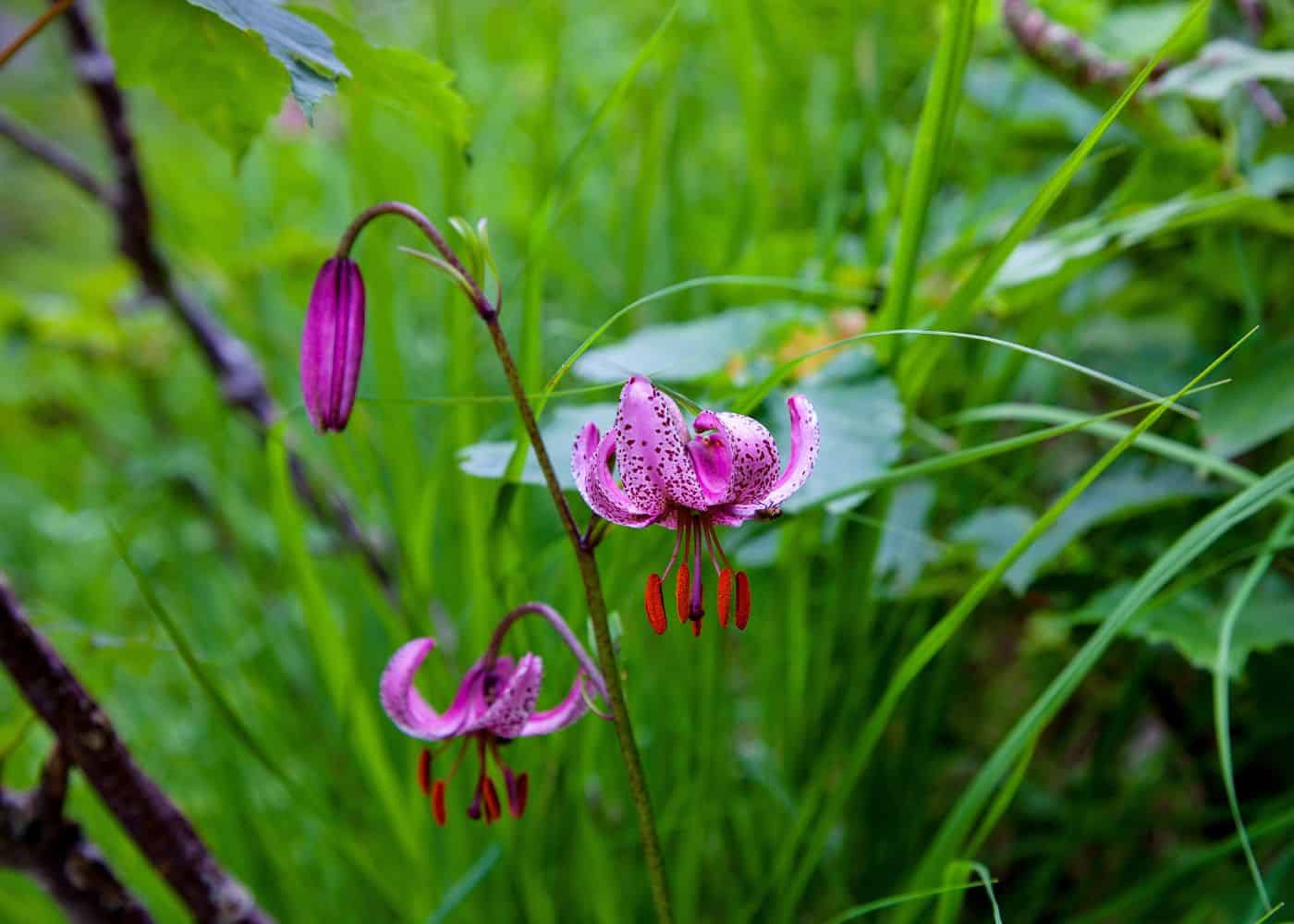
Introduction to the martagon lily
The martagon lily (Lilium martagon) is a species of flowering plant in the lily family. Native to Europe, it is widely cultivated as an ornamental and can be found growing wild in many parts of North America. The flowers are often described as having a “Turk’s cap” shape, with reflexed petals that give them a unique look.
Characteristics
Martagon lilies have slender stems that grow up to 5 feet tall and bear clusters of fragrant blooms from mid-summer through early fall. Each lily flower has six pointed petals arranged around a central cup-shaped structure called the corona, which gives the flower its distinctive turban shape.
Colors range from white to pinkish purple, with some varieties featuring yellow or orange markings on their petals or throats. The foliage consists of narrow leaves that form whorls along the stem and may reach up to 18 inches long at maturity.
Growing requirements
Martagon lilies prefer full sun but will tolerate partial shade if necessary; they do best in moist soil enriched with organic matter such as compost or manure. They require good drainage, so avoid planting them in areas prone to standing water or heavy clay soils; raised beds are ideal for this purpose if needed. Deadhead the spent flowers regularly throughout the season to encourage more blooms and divide clumps every few years when they become overcrowded for optimal health and vigor.
Benefits
Gardeners love martagon lilies because they add beauty and fragrance without taking up too much space. Additionally, these plants attract pollinators like bees, butterflies, hummingbirds, moths, and other beneficial insects into your garden. Furthermore, deer tend not to browse on them, so you don’t need to worry about protecting your plants from those particular wildlife visitors.
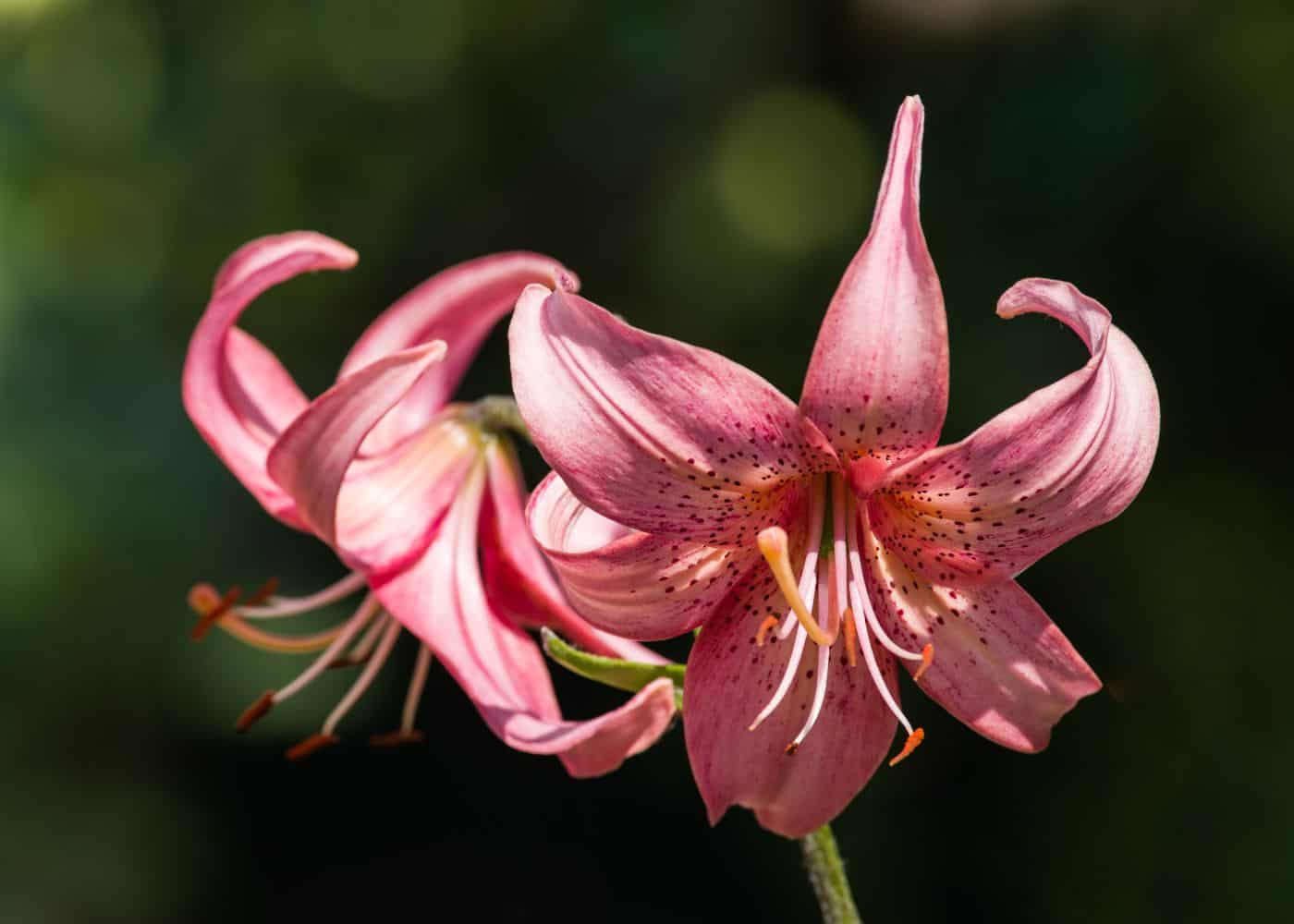
Planting martagon lilies
Martagon lilies are a beautiful and unique addition to any garden. They can be planted in the spring or fall, depending on your climate. When planting martagon lilies, it is important to choose a location that has well-drained soil and receives partial shade throughout the day.
Planting depth should be about 4 inches (10 cm) deep with 8 inches (20 cm) of space between each bulb. The best type of soil for martagon lilies is one that is rich in organic matter, such as compost or peat moss. If you have clay soil, mix in some sand to improve drainage before planting your bulbs.
Water thoroughly after planting and keep the area moist until new growth appears above ground level – usually within two weeks of planting. Once established, martagons require little additional water other than occasional watering during dry spells or periods of extreme heat if they are not receiving enough natural rainfall from Mother Nature.
Fertilizing is also an important part of caring for your martagons; apply a balanced fertilizer once per year when new shoots appear in early springtime. This will help promote strong, healthy growth all season long.
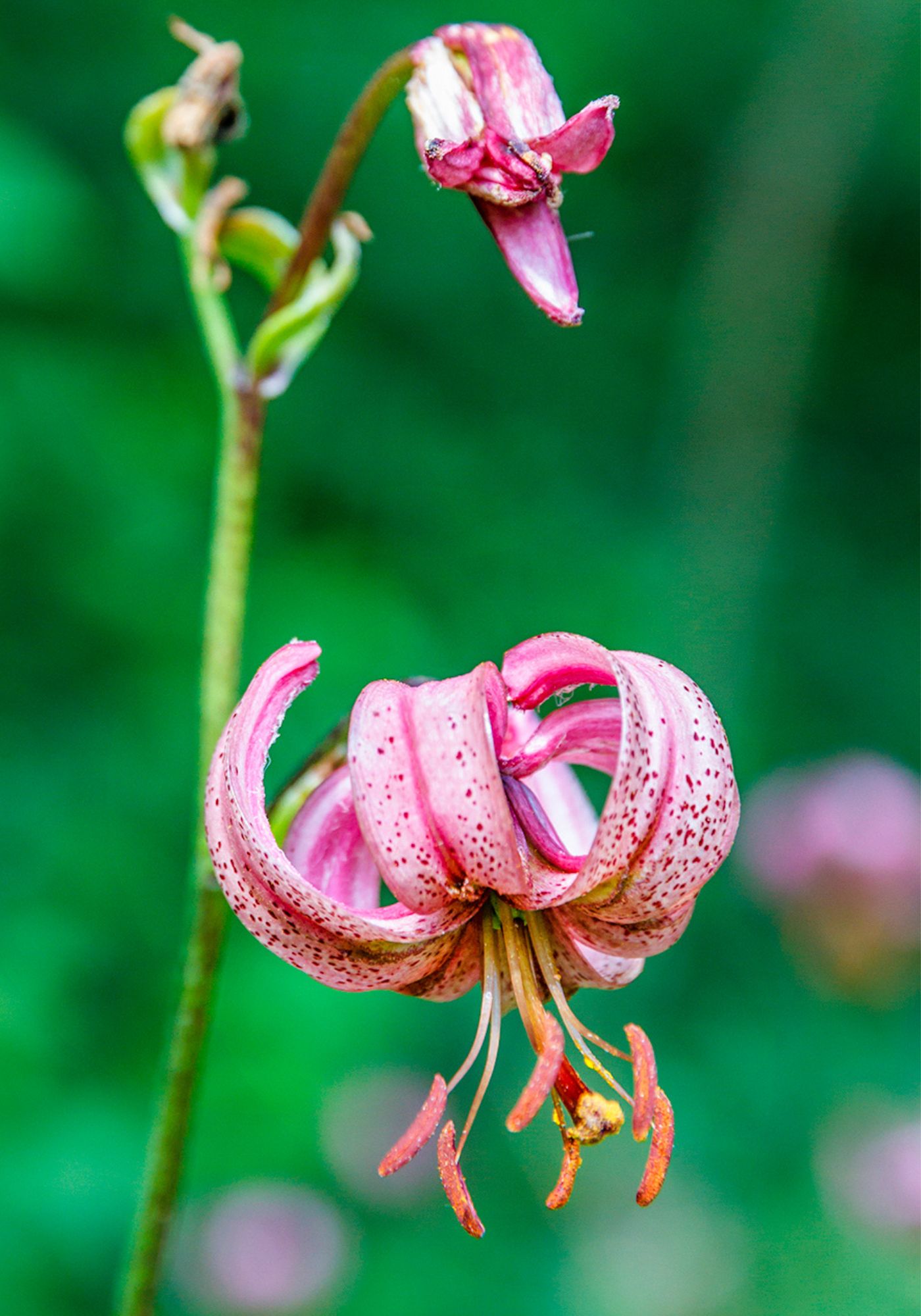
Caring for martagon lilies in the garden
Caring for martagon lilies is essential to ensure they thrive and bloom. Proper watering, fertilizing, and pruning are key elements of successful lily care.
Watering
Martagon lilies should be watered deeply at least once a week during the growing season. Water in the morning so that any excess moisture can evaporate before nightfall. In hot climates, water more frequently if needed to keep soil moist but not soggy. Avoid getting water on the foliage, as this can cause disease problems.
Fertilizing
Fertilize your martagon lilies during the growing season with a balanced fertilizer for flowering plants according to package directions. Do not fertilize during winter months when plants are dormant or in summer when temperatures exceed 90°F (32°C).
Pruning
Prune off dead leaves and flower stalks after blooming has finished each year by cutting them back to just above ground level using sharp garden shears or scissors. This will help prevent diseases from spreading and encourage new growth for next year’s flowers. Deadheading spent flowers also helps promote additional blooms later in the season.
Common problems
Common problems with martagon lilies include aphids, slugs, snails, powdery mildew, rust fungus, and botrytis blight (gray mold). Regularly inspect your plants for signs of pests or disease and take action accordingly; use insecticidal soap sprays or other organic treatments if necessary to control pest populations while avoiding chemical pesticides whenever possible. If you notice any fungal diseases developing on your plants, then treat them immediately with an appropriate natural fungicide according to label instructions.
Once established in their ideal location, martagons make excellent additions to perennial gardens, where they will reward you with beautiful blooms each year. Enjoy these lovely flowers by planting them near walkways where their fragrance can be appreciated up close; try combining them with other shade-loving perennials like hostas for a truly stunning display.
Propagating martagon lilies
Propagating martagon lilies is a great way to increase your garden’s beauty and variety. There are two main methods of propagating martagon lilies: division and seed collection.
Division is the easiest way to propagate these flowers, as it requires minimal effort on the part of the gardener. Simply dig up an existing clump of lily bulbs, separate them into smaller groups with at least three bulbs each, and then replant in well-drained soil in full sun or partial shade. The new plants should bloom within a few years after planting.
Seed collection is also possible but can be more difficult than division because seeds need specific conditions for germination and growth—namely, cold temperatures (below 40°F) for several months before sowing in springtime when temperatures warm up again.
Collecting viable seeds from mature plants can be tricky; you must wait until they turn brown before harvesting them off the stem, which may take some time, depending on how quickly they ripen in your area. Once collected, store them in an airtight container until ready to sow outdoors or indoors during winter months if necessary.
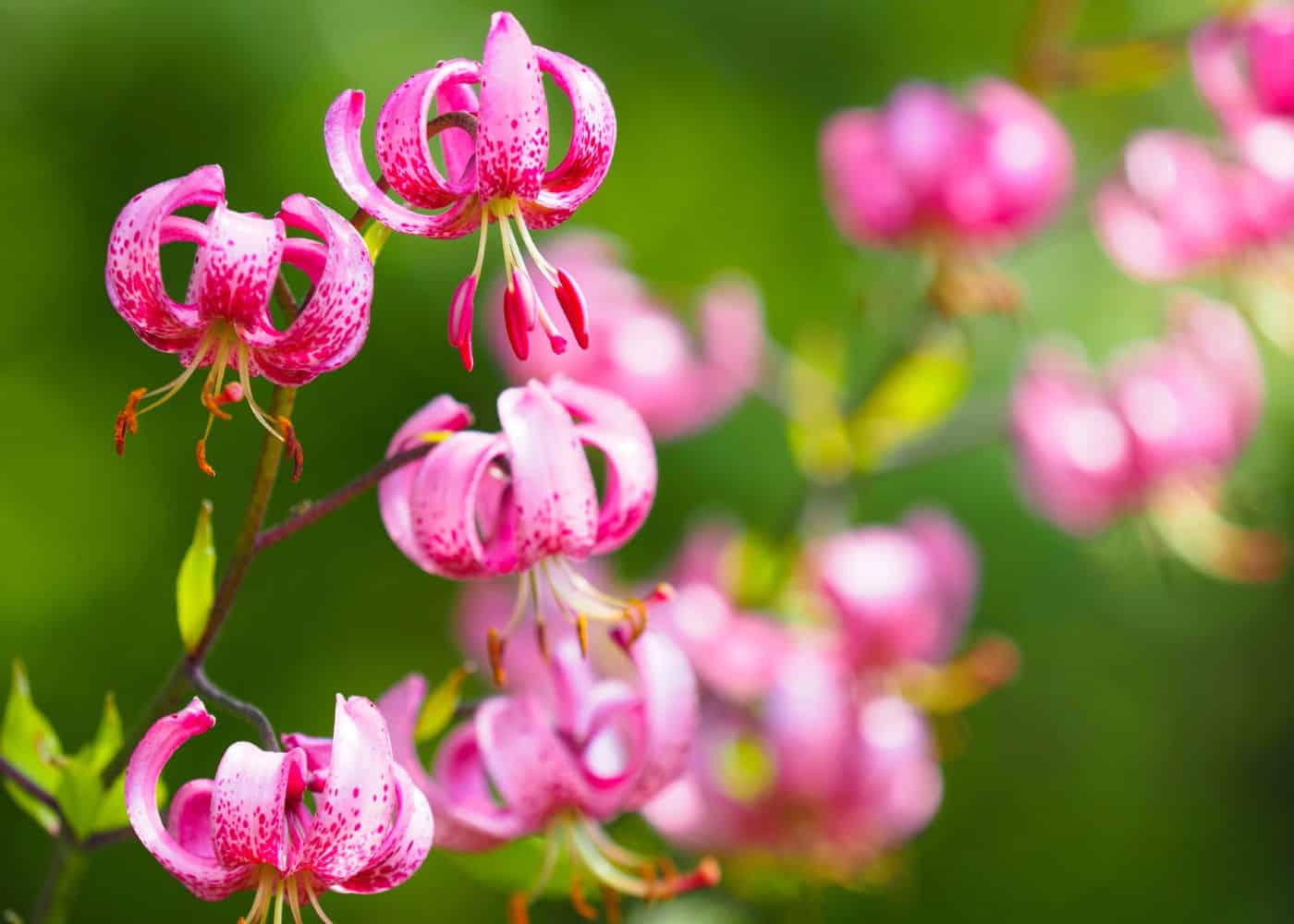
Common problems with martagon lilies
Martagon lilies are a beautiful addition to any garden, but they can be prone to certain problems. Pests and diseases can affect the health of your martagon lily plants, so it’s important to know how to identify and treat them.
Aphids are one of the most common pests that attack martagon lilies. These small insects feed on the sap from leaves and stems, causing yellowing or curling of foliage. To get rid of aphids, spray with an insecticidal soap or neem oil solution every 7-10 days until the infestation is gone. You may also want to try introducing beneficial insects such as ladybugs into your garden, which will help keep aphid populations in check naturally.
Fungal diseases like powdery mildew can also affect martagon lilies if conditions are too wet or humid for extended periods of time. This fungus appears as white spots on leaves and stems, which eventually turn brown and die off if left untreated. The best way to prevent fungal disease is to provide good air circulation around your plants; avoid overcrowding when planting multiple specimens together in one area. If you do notice signs of powdery mildew, remove affected parts immediately and spray with a fungicide according to package instructions for treatment purposes only – not prevention.
Slugs and snails can also cause damage by eating away at young shoots or flower buds overnight while they sleep during the day hours underneath mulch or other organic material near your plants’ base roots. To protect against these slimy critters, spread diatomaceous earth around each plant’s base (or use copper tape) as well as keep debris cleared away from their immediate vicinity – this will make it harder for slugs/snails to access them without being seen first by hungry predators. Additionally, handpicking any visible pests off plants before dusk should help reduce numbers over time too.
Finally, overwatering is another issue that could lead to root rot in martagon lilies if drainage isn’t adequate enough in the soil where they’re planted. This causes waterlogged soil conditions leading up to deathly wilting symptoms among foliage due to a lack of oxygen reaching its roots systemically speaking. Be sure there are plenty of drainage holes present within pot containers housing them outdoors.
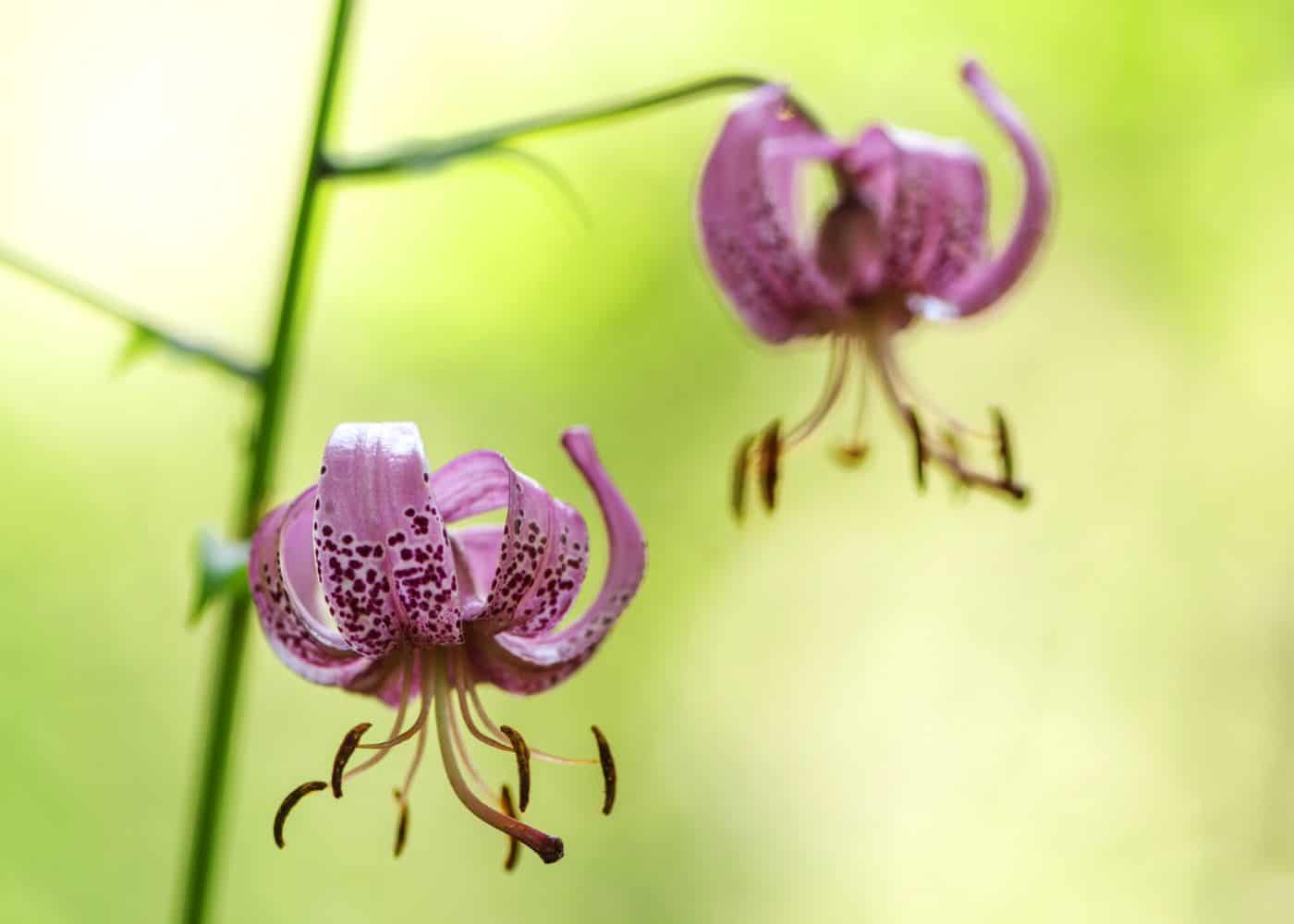
FAQs about the martagon lily
Are martagon lilies perennials?
Yes, martagon lilies are perennials. They can be planted in the spring and will come back year after year in most climates. These plants thrive in moist soil with plenty of sun or partial shade, making them a great addition to any garden.
Martagon lilies also have beautiful blooms that last for weeks, adding color and texture to your landscape. With proper care and maintenance, these flowers can bring joy for many years to come.
Are martagon lilies hardy?
Yes, martagon lilies are hardy. They can survive cold temperatures and tolerate some shade, making them a great choice for northern climates. Many cultivars are hardy down to Zones 3 or 4. With proper care, these lilies will come back year after year and provide beautiful flowers each season.
Are martagon lilies fragrant?
Martagon lilies are not known for their fragrance. They do have a light, sweet scent, but it is not particularly strong or noticeable. The flowers of the martagon lily tend to be more appreciated for their beauty than for any scent they may produce. In addition, some varieties of martagon lilies may have no scent at all. Therefore, if you are looking for fragrant flowers in your garden, you should look elsewhere.
Do martagon lilies multiply?
Yes, martagon lilies do multiply. They spread through underground rhizomes and can form large colonies over time. Martagons are hardy perennials that can survive in many climates and soils, making them an ideal choice for gardeners looking to add color to their landscape without too much effort. The flowers of the martagon lily come in a variety of colors, from white to pink and purple, adding beauty to any garden.
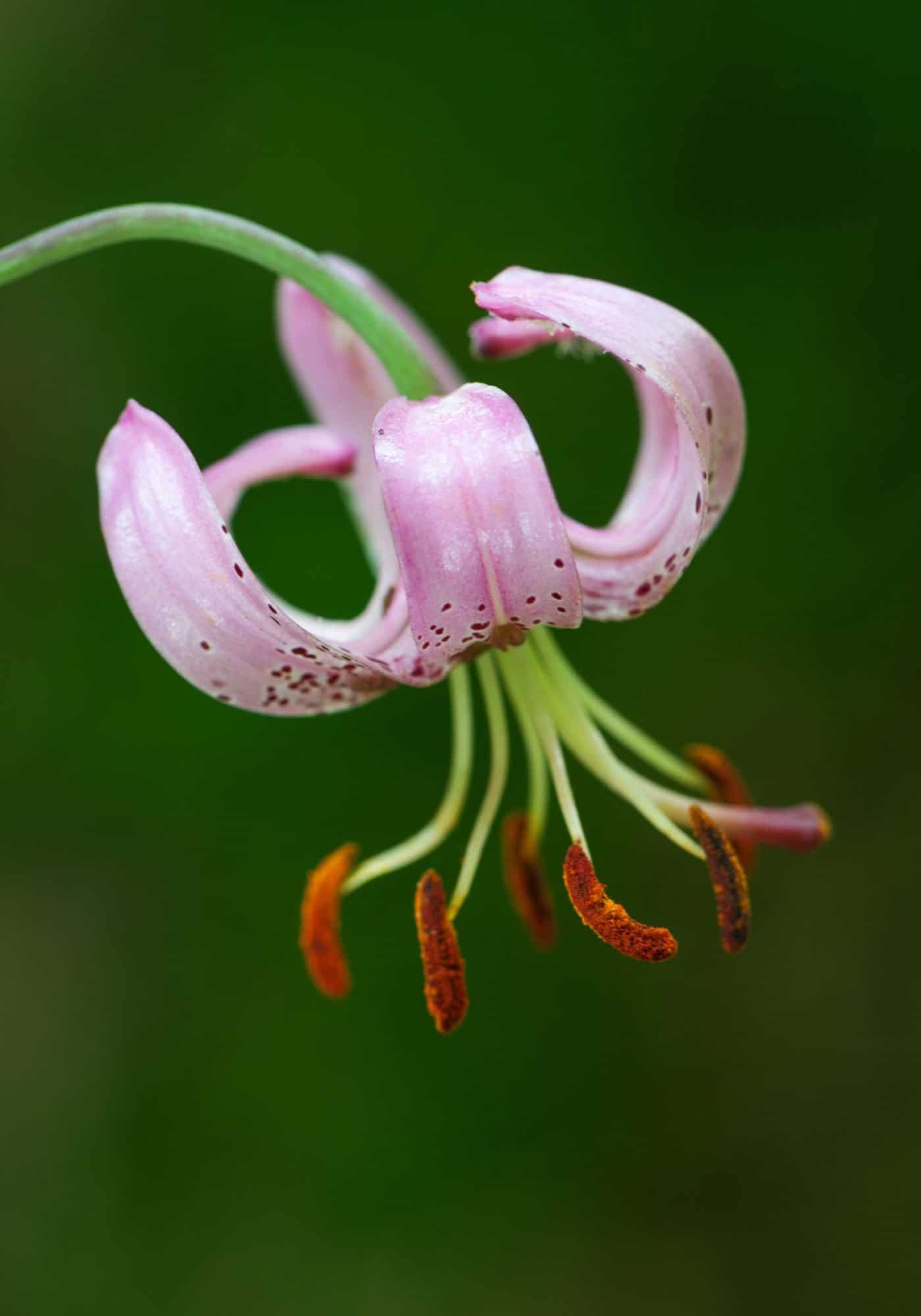
Before you go…
The martagon lily is a beautiful flower that can bring elegance and color to any garden. With the right planting, care, and propagation techniques, you can enjoy these flowers for years to come.


